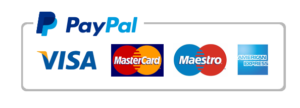Running head: BIOPSYCHOSOCIAL POPULATION HEALTH POLICY PROPOSAL 1
Running head: BIOPSYCHOSOCIAL POPULATION HEALTH POLICY PROPOSAL 1
BIOPSYCHOSOCIAL POPULATION HEALTH POLICY PROPOSAL 2
Biopsychosocial Population Health Policy Proposal
Capella University
Alexander Ruche
April, 2021
Introduction
In healthcare, diabetes is a condition that either causes high blood sugar in the bloodstream or less sugar in the bloodstream. The body is always supposed to generate insulin in the bloodstream which helps the body in creating energy however, with diabetes; someone cannot either use the insulin or cannot produce enough insulin in the body. According to the CDC, research was carried out in the year 2008 and it stated that in a total population of the US, about 11 percent are suffering from diabetes. According to the same research, diabetes is more common in the older population as compared to the younger population (Connor, & Janusek, 2021). On the other hand, according to the current research, China is the country with the highest number of people suffering from diabetes. In this paper, we will discuss more about the Biopsychosocial Population Health Policy Proposal where we will consider diabetes which is a common condition among the elderly population. On the other hand, we will also discuss the importance of the policy and much more.
The policy proposal and the guidelines
Despite diabetes being a disease that needs treatment just like other diseases, diabetes can be termed as a medical condition since it has no cure. Although diabetes is permanent for the time being, it can be managed, and patients live a normal life when done so correctly. Research explains that diabetes can indeed go into remission. This means the patient will exibit no symptoms in the body, but technically still exists in the body system (Kalra et al, 2018). For a better outcome for the geriatric population suffering from diabetes, a healthcare center needs to form a good policy and guidelines that should be applied when taking care of the patients. The best policy to use is that the healthcare center should ensure that it sticks to medication such as metformin, as treatment for the condition. Other than this, the center can also apply insulin and sulfonylureas as another type of medication for the elderly suffering from diabetes. The use of glucose controlling medications should become the hospital policy. This policy will ensure that patients are being monitored and taught how to manage their blood sugar levels through medicating correctly.
On the other hand, there can be guidelines that can also be applied by the healthcare facility to ensure the outcome of the patient is positive. To start with, the facility should ensure that it has all the professionals to deal with the condition all through the day. The professionals should follow up with their patients to ensure that proper outcomes are achieved. Some problems can arise and will be witnessed during care. Challenges are always going to be present such as culture and the values. Some of some of the patient’s religions, or beliefs might not allow them to use medications like insulin in their body. Such patients can be treated with another medication during their blood sugar control treatment. Secondly, some medications might not work for all patients alike. This happens because of the different mechanisms of actions and other underlying conditions. We must also remember that there are different types of diabetes.
Need for a proposed policy
In the healthcare facility, when the above policy and guidelines are considered and followed correctly, the healthcare outcome for patients suffering from diabetes will improve. Due to this fact, the proposed policy and the guidelines are so important in the following ways: the policy acts as a roadmap to guide the healthcare professionals on what to follow while taking care of the elderly population suffering from diabetes. The policy will also allow the facility professionals to follow the facility rules and regulations and this will increase the patient’s outcomes (Bazzazian, 2017). The policy will also help in the standardization of care and this also helps the facility in improving the quality of care provided.
To ensure better outcomes for the patients, the policy will help in following up on the elderly population and adhering to the fact that they are being taken care of. Secondly, it will also help in maintaining the best medication for diabetes, for each patient in their respective levels of disease progression. It will also create an easy way for the elderly people to seek help in the facility knowing very well that they will be taken care of and that their blood sugar will be managed as the facility has already done before.
Potential for an inter-professional approach
According to the inter-professional team, there needs to be good communication while taking care of the elderly population in general. Amongst the people or professionals, there should always be good communication with the primary care physician who will be responsible for the monitoring of the diabetes check-ups for their patients. Secondly, there must be a doctor known as an endocrinologist, a podiatrist to prevent ulcers and manage the feet of the patient that is prescribed exercise, and a dietician as diabetes patients need balanced diets (Szafran, et al, 2019). There is a need for proper communication among these professionals which will lead to good collaboration in the care for diabetes in the elderly population hence increasing the patient outcomes. The collaboration will also assist in taking care of the patients according to their beliefs and values if they were to come up during the management and treatment. This communication is of importance with the medical team to make sure that the patients are prescribed the correct medications to treat their diabetes.
In conclusion, since it is indeed a fact that diabetes mostly affects the elderly population, there is a need for better care of this population. Many of these people are already at a fragile and frail age and can easily forget to manage their blood sugar through diet. At an elderly age, it is also possible that this population is not capable of enough exercise to manage their blood sugar. This is the reason that a policy of making sure that medications are being adhered to is of great importance. This policy will ensure that the advances we have made through medications for diabetes will be taken advantage of, but most importantly, it will better our quality of life.
References
Bazzazian, S. (2017). Biopsychosocial Path Model of Self-Management and Quality of Life in Patients with type 2 Diabetes. Journal of Bioinformatics and Diabetes, 1(3), 35.
Connor, J. B., & Janusek, L. W. (2021). A Biopsychosocial Framework to Examine Risk for Type 2 Diabetes in Asian Pacific Islander Immigrants. Research and Theory for Nursing Practice, 35(1), 82-96.
Kalra, S., Baruah, M. P., & Sahay, R. (2018). Salutogenesis in type 2 diabetes care: a biopsychosocial perspective. Indian journal of endocrinology and metabolism, 22(1), 169.
Szafran, O., Kennett, S. L., Bell, N. R., & Torti, J. M. (2019). Interprofessional collaboration in diabetes care: perceptions of family physicians practicing in or not in a primary health care team. BMC family practice, 20(1), 1-10.
Running head:
BIOPSYCHOSOCIAL POPULATION HEALTH POLICY PROPOSAL
1
Bio
p
sychosocial Population Health Policy Proposal
Cape
lla University
Alexander
Ruche
A
pril
, 2021
Running head: BIOPSYCHOSOCIAL POPULATION HEALTH POLICY PROPOSAL
1
Biopsychosocial Population Health Policy Proposal
Capella University
Alexander Ruche
April, 2021


